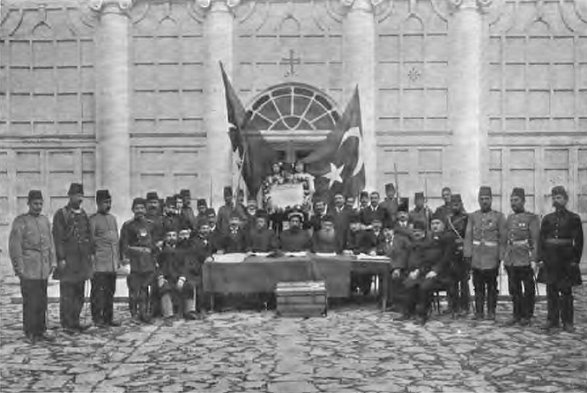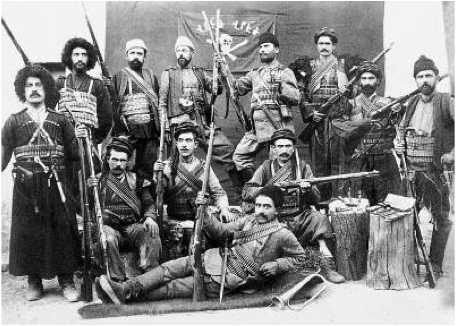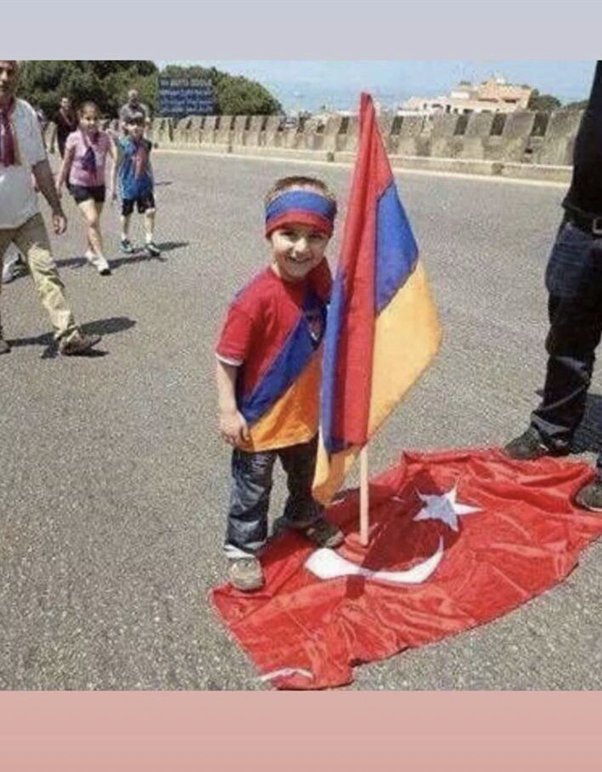BOSTON—Boston University will host an international conference and a student workshop on the Armenian Diaspora during the weekend of February 12. The three-day event is organized by the Charles K. and Elisabeth M. Kenosian Chair in Modern Armenian History and Literature, Boston University.
Armenian Diasporan communities emerged over centuries as a result of voluntary migration and forced displacement in times of military conflicts, the Genocide during World War I, and economic and political crises. Featuring ten panels, the conference and the workshop will bring together more than forty scholars to present their views and new research on the Armenian Diaspora. They will explore a wide range of topics, including the formation of Armenian Diaspora communities and identities in different parts of the world, the role of the Armenian communities in host societies, and the development of diasporic cultures in various contexts (e.g., nationalism, transnationalism, feminism).
Friday Program:
The student workshop will take place on Friday, February 12, from 10 a.m. to 6 p.m. at The Castle, 225 Bay State Road, Boston University.
The workshop is sponsored by the Charles K. and Elisabeth M. Kenosian Chair in Modern Armenian History and Literature, and the International Institute for Diaspora Studies (A Division of the Zoryan Institute).
Session 1: Diasporic Identities and Community-building
Friday, 10 a.m. – 12:15 p.m.
Chair & discussant: Simon Payaslian (Boston University)
Presenters:
Cynthia Oliphant (California State University, Fresno)
“The Effect of Organizational Structure on the Diaspora Experience”
Anna Harutyunyan (Freie Universität Berlin, Institute Of Ethnology)
“Challenging the Theory of Diaspora from the Field”
Hakem Rustom (London School Of Economics)
“The ‘Others’ of the Diaspora: Armenian Migration from Anatolia to France”
Session 2: Diaspora and Cultural Development
Chair: Bedross Der Matossian (MIT)
Discussant: Kevork Bardakjian (University Of Michigan, Ann Arbor)
Friday, 1:30 p.m. – 3:30 p.m.
Presenters:
Lilit Keshishyan (UCLA)
“Wandering as Rule: The Diasporic Subject in Vahe Berberian’s Namakner Zaataren”
Marie-Blanche Fourcade (Université De Montréal)
“Heritage Challenges in Diaspora: How to Preserve, to Share and to Pass Down? The Case Study of the Quebec Armenian Community”
Stephanie Stockdale (Thunderbird School Of Global Management)
“Cultural & Social Factors of the Armenian and Jewish Diasporas of Argentina: A Comparative Study”
Session 3: Transnationalism, Nationalism, and Conflict
Friday, 4 p.m. – 6 p.m.
Chair: Richard G. Hovannisian (UCLA)
Discussant: Asbed Kotchikian (Bentley University)
Presenters:
Stepan Stepanyan (Fletcher School Of Law And Diplomacy, Tufts University)
“The Armenian Community of Georgia as a Factor of Security in the South Caucasus Region”
Anush Bezhanyan (University Of South Carolina)
“Iraqi Armenians after the Toppling of Saddam Hussein: Emigration or Repatriation”
Katherine Casey (University Of Chicago)
“Agree to Disagree: The Incompatible Nationalisms of Armenia and Its Diaspora”
Lorand Poosz (Bolyai University)
“Data Concerning the Transylvanian Armenian Community’s Response to the Armenian Genocide”
Saturday-Sunday Program
The conference will take place on Saturday, February 13, from 9 a.m. to 6:30 p.m., and on Sunday, February 14, from 9:30 a.m. to 6 p.m. On both days the conference will be held at the School of Management, Auditorium-Room 105, 595 Commonwealth Avenue, Boston University.
The conference is sponsored by the Charles K. and Elisabeth M. Kenosian Chair in Modern Armenian History and Literature, the International Institute for Diaspora Studies (A Division of the Zoryan Institute), and the National Association for Armenian Studies and Research, Belmont, Mass.
Saturday Program
Session 4: Diasporic Identity, Human Rights, and Genocide
Saturday, 9 a.m. – 10:30 a.m.
Chair: Simon Payaslian (Boston University)
Discussant: George Shirinian (Zoryan Institute)
Presenters:
Nanor Kebranian (Kenderian) (Columbia University)
“Can the Armenian Diaspora Speak? Diasporic Identity in the Shadow of Human Rights”
Joyce Apsel (New York University)
“Teaching the Armenian Genocide in North America: New Resources, Programs, and Integration within Genocide Studies”
Rubina Peroomian (UCLA)
“The Third-Generation Armenian-American Writers Echo the Quest for Self-Identity with the Genocide at Its Core”
Session 5: Narrativization of Diasporic Belongingness and Revival
Saturday, 10:30 a.m. – noon
Discussant: Khachig Tölölyan (Wesleyan University)
Chair: Marc Mamigonian (NAASR)
Presenters:
Susan Pattie (University College London)
“Constructing Narratives of Belonging among Armenians in the Diaspora”
Sebouh Aslanian (Cornell University)
“Networks of Circulation, Patronage, and ‘National Revival’: The Armenian Translation of Charles Rollin’s History of Rome”
Sona Haroutyunian (Ca’ Foscari University Of Venice)
“Vittoria Aganoor’s Alter Ego”
Session 6: Armenian Repatriations 1946-1949: Contexts, Experiences, Aftermaths
Saturday, 1:30 p.m. – 3:45 p.m.
Chair & Discussant: Susan Pattie (University College London)
Presenters:
Sevan Yousefian (UCLA)
“Picnics for Repatriates”
Astrig Atamian (Inalco, Paris)
“Armenia, here we come! The French Armenian Communists during the Repatriations”
Kari Neely (Middle Tennessee State University)
“Kevork Ajemian’s Use of Middle Eastern Armenian Repatriation in ‘A Perpetual Path’ ”
Session 7: Desnelle Collective
Saturday, 4 p.m. – 6:30 p.m.
Chair: Hrayr Anmahouni/Eulmessekian (La Crescenta, Calif.)
Discussant: David Kazanjian (University Of Pennsylvania)
Presenters:
Helin Anahit (Middlesex University, London)
“Diaspora Landscapes as a Thought Model”
Emily Artinian (Chelsea College Of Art & Design, London)
“From Ararat to Anywhere?”
Christopher Atamian (New York)
“Thinking the Past: Restorative and Reflective Nostalgia in Frounze Dovlatian’s ‘Garod’”
Charles Garoian (Penn State School Of Visual Arts)
“Scattered Flesh / Tservadz Mort”
Neery Melkonian (New York)
“A Feminism that is Often Accented, Sometimes Whispers, Even Stutters: Modern and Contemporary Armenian Women Artists in Transnational Contexts”
Abelina Galustian (University Of California, Santa Barbara)
“The Substance of Orientalism in Visual Representation”
Sunday Program
Session 8: Culture & Economy in Diasporan Communities
Sunday, 9:30 a.m. – noon
Chair: George Shirinian (Zoryan Institute)
Discussant: Marc Mamigonian (NAASR)
Presenters:
Aida Boudjikanian (Montreal)
“The Armenian Jewelers’ Niche of Montreal: Between a Local Trait and an Armenian Diasporic Tradition”
Gregory Aftandilian (Washington)
“Re-cementing Kinship Ties: Armenian-American Soldiers and the French Armenian Community during World War II”
Philippe Videlier (Centre National De La Recherche Scientifique, Lyons)
“Armenians and Turks in France Confronting the Genocide”
Matthias Fritz (State Linguistic V. Brusov University, Yerevan)
“The Evolution of the Armenian Diaspora in Germany during the Past Two Decades”
Session 9: Transdisciplinarity of Diaspora Studies
Sunday, 1 p.m. – 3:30 p.m.
Chair: Richard G. Hovannisian (UCLA)
Discussant: Khachig Tölölyan (Wesleyan University)
Presenters:
Daniel Douglas And Anny Bakalian (CUNY)
“Armenians in the United States: A Quantitative Analysis Using the American Community Survey”
Carel Bertram (San Francisco State University)
“Diasporic Armenians as Pilgrims to Their Family Towns and Villages”
Joan Bamberger (Anthropologist, Watertown, Mass.)
“Re-Generation of Armenian Arts in Watertown, Massachusetts”
Nikol Margaryan (Yerevan State University)
“Anthroponyms in the Context of Ethnic Identity”
Session 10: Diasporan Ethnonationalism and Transnationalism
Sunday, 3:45 p.m. – 6 p.m.
Chair: Asbed Kotchikian (Bentley University)
Discussant: Bedross Der Matossian (MIT)
Presenters:
Ara Sanjian (University Of Michigan-Dearborn)
“Limits of Conflict and Consensus among Lebanese-Armenian Political Factions in the Early 21st Century”
Vartan Matiossian (Hovnanian School, New Jersey)
“Domino Effect: U.S. Immigration Policies and the Formation of the Armenian Communities in Latin America”
Ohannes Geukjian (American University Of Beirut)
“Armenia-Diaspora Intransigence in Light of Armenian-Turkish Relations and the Resolution of the Nagorno-Karabakh Conflict, 1991-Present”
Both the workshop and the conference are open to the public, and admission is free.
Founded in 1839, Boston University is an internationally recognized institution of higher education and research. With more than 30,000 students, it is the fourth largest independent university in the United States. BU consists of 17 colleges and schools along with a number of multi-disciplinary centers and institutes that are central to the school’s research and teaching mission.









